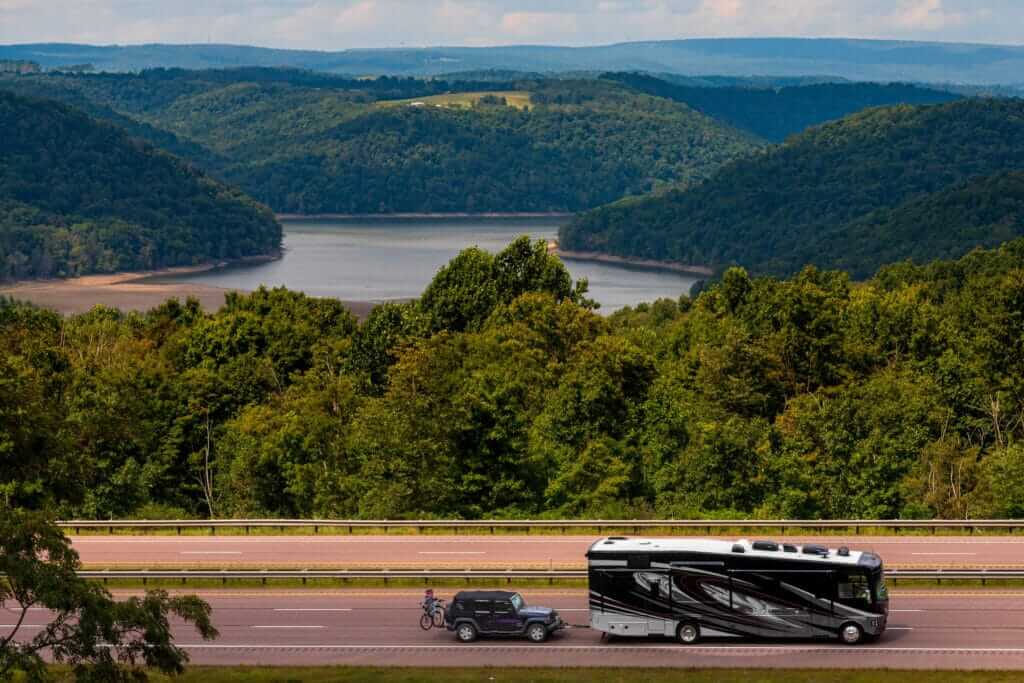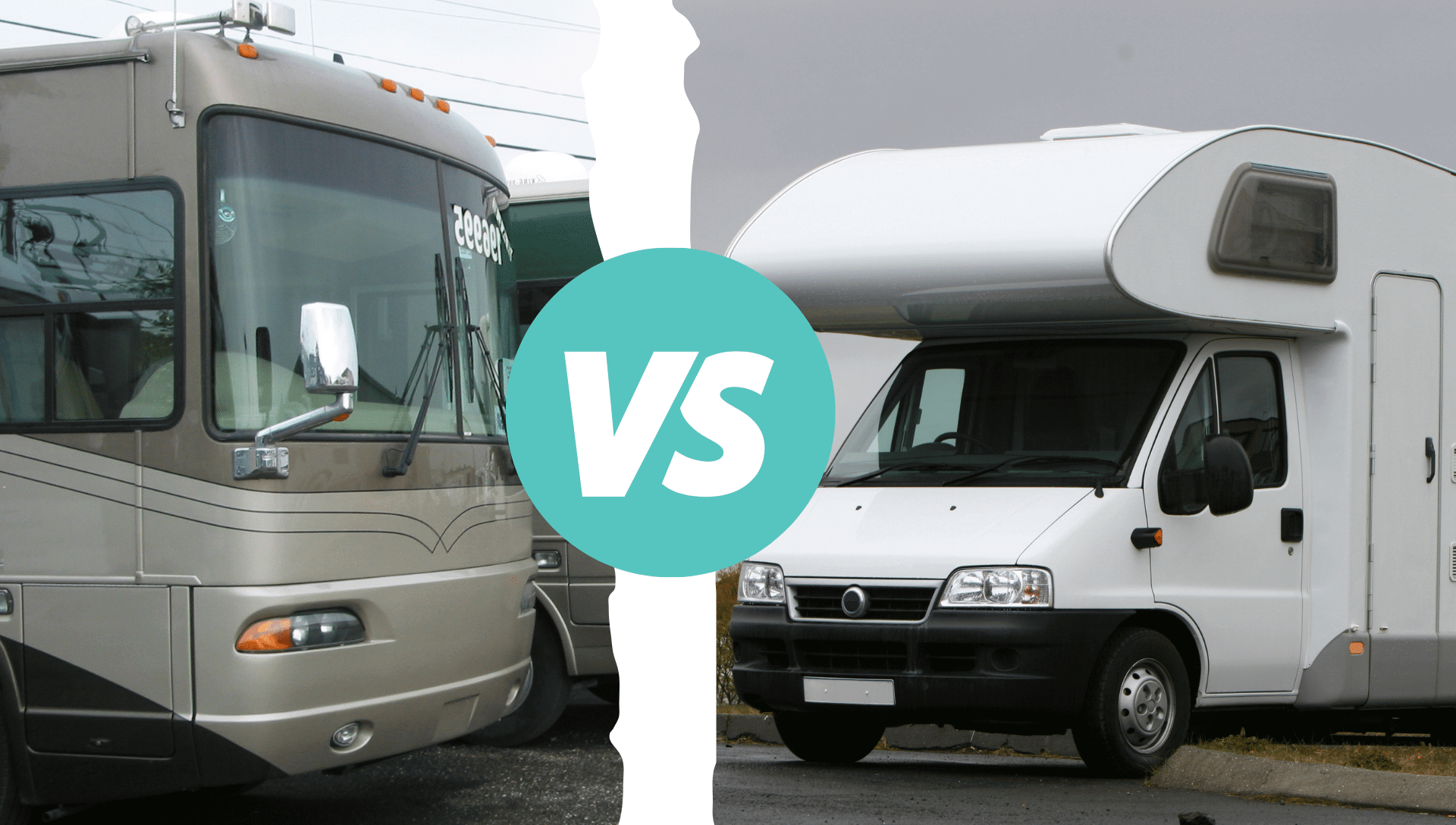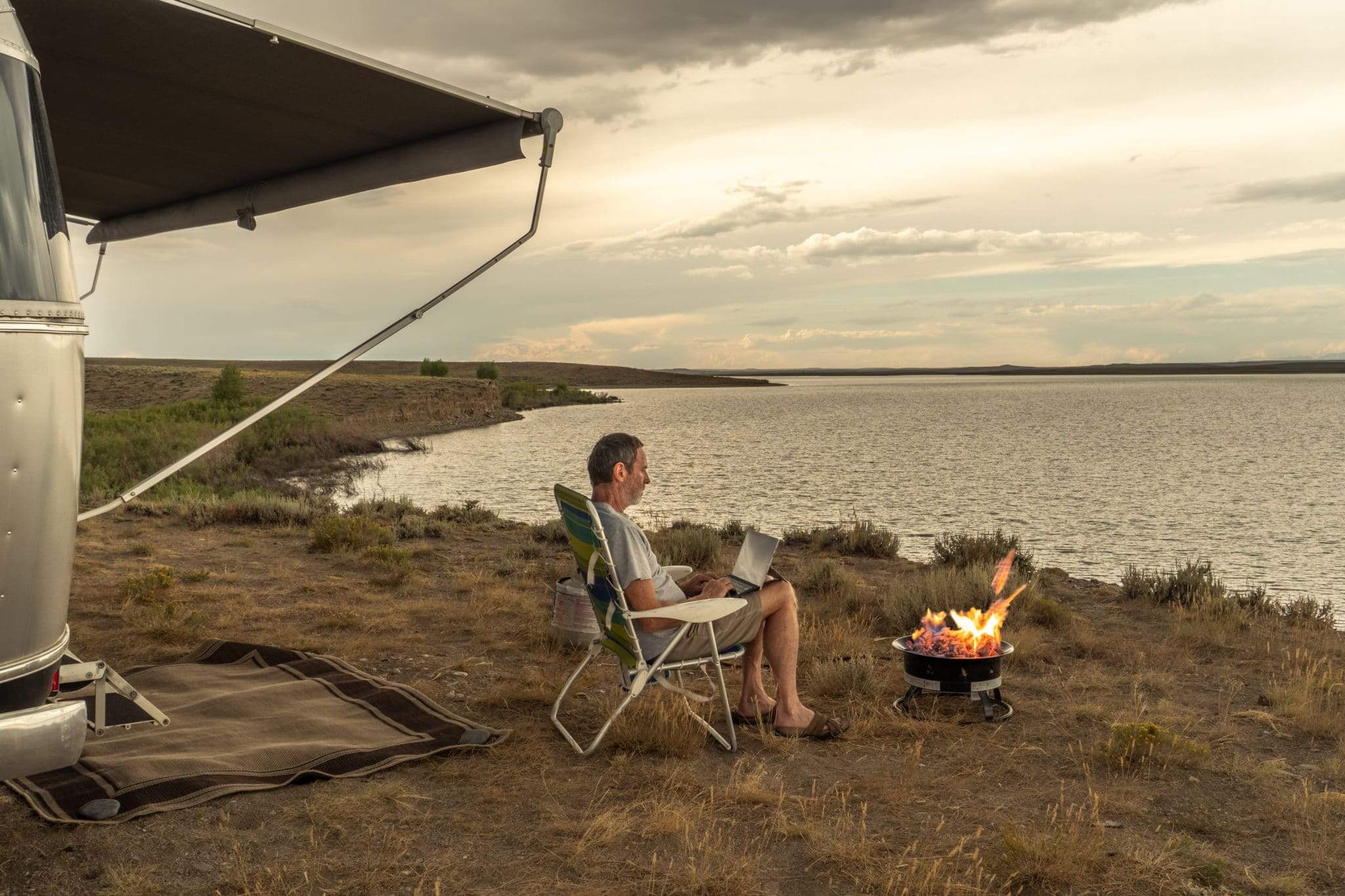Table of Contents Show
You have a lingering dream of jumping in an RV and taking the family on an all-encompassing tour of the country. Your dream is completed with national park visits, historical site stops and hitting every beach known to mankind. You’ve talked your spouse into the idea and have started shopping for the perfect RV to escort you across America. There’s just one problem: which motorhome do you pick? You have narrowed down the selection to a Class A, which looks like you will be driving a bus, or a Class C, sticking the kids in the bunk over a truck cab. What are the differences when you compare Class A vs Class C recreational vehicles?
Don’t play “Pin the Tail on the RV,” spinning around blindfolded to tape a Sold sign on your unforeseen choice! We will break down the pros and cons of each motorhome type, so you can make an educated decision with your eyes wide open; one that will give your family the space and comfort of home on the road. The top five things to consider when buying an RV are here for you.

What They Have in Common
Class As and Cs can both offer many of the same amenities. From slides that include dining tables for family meals together to bunk beds that expand your sleep space capabilities. And although it is less common to find in Class Cs, residential refrigerators can be beneficial in both types of RVs, giving you more room for fresh and frozen food choices.
Most recreational vehicles today offer full baths, with all facilities located in one room of the RV. That’s the case for both classes here. There are still many other models that offer floor plans with a shower on one side of the RV, and a toilet and sink on the opposing side, as well. And both classes can have full kitchens with almost every appliance your sticks-and-bricks home has.
Both classes can be outfitted with solar capabilities, as well as outside showers, and outdoor televisions for game day with a crowd. Depending on the model, either type of RV can be purchased with a diesel or gas engine. Both can have tow hitches to pull another vehicle or trailer, although the towing capacity will be dependent upon the engine type and each model’s GVWR.
Where They Differ
A few Class A vehicles at the upper end of the price range now have a 2nd bathroom on board, which appears to be lacking in the Class C category at this point. Most Class A’s also have a spacious cockpit with captain’s chairs, whereas Cs are usually smaller truck cabs.
Exterior Storage
Another important distinction between A and C types is the amount of exterior storage each has. Because most Class As sit up higher (up to 13.5 feet in height), they have much more space dedicated to storage below their flooring…so much so that space is usually referred to as the basement on Class A’s. Class C’s, however, are relegated to smaller storage spaces. If you are planning on bringing a lot of “stuff” on your camping trips, this might be a deal-breaker!
Heated Underbelly
A height-related feature that Class A’s can brag about relates to piping. Because this type of RV has a basement, all of the pipes are usually considered much more insulated against cold. In fact, the ducting for the heater usually runs through the basement, as well, giving RVers the capability to keep the pipes warm on especially cold nights by just running the furnace inside. For the most part, Class C pipes are more exposed to the elements.
Chassis
The biggest difference between Class A and C motorhomes is the type of chassis they are built on. Class As sit on a bus chassis and can range in size from 24’ to 42’ long. On the other hand, Class C RVs are built on a truck chassis, usually with a shorter wheelbase, and come in lengths stretching from 19’ to 32’. These structural differences can affect the way each motorhome handles when driving. Test driving is a must when making your decision. Obviously, if you choose a 42’ Class A, you will have 10 extra feet of interior space to share with your family.
Gas Mileage
Gas mileage in today’s rigs might be another deciding factor, as Class As generally get 5 to 10 mpg (diesel engines may get a bit more if you’re not heavy-footed). Class Cs can get 8 to 12 mpg, but all these numbers can be thrown out the window if (1) you are towing something, (2) you drive mountainous routes frequently, or (3) if you drive at higher rates of speed.

Class A Motorhome Pros & Cons
If you are seriously considering a Class A as your #1 choice, here are lists of both the pros and cons of this RV:
Pros:
- Can offer a great deal of space
- Can sleep up to 8 on some models
- Good 4 season motorcoach with insulated pipes
- Offers a more powerful engine
- Usually has much more storage than other RV types
- Usually has a more towing capacity
Cons:
- Fewer miles per gallon
- Can be intimidating to drive
- Because of its size (on longer units), can be limited on campsites it will fit in
- Usually more expensive to purchase
- Usually more expensive to maintain

Class C Motorhome Pros & Cons
If a Class C recreational vehicle has stolen your heart, then consider these pros and cons before purchase:
Pros:
- Better gas mileage
- Drives like a truck
- Larger models can sleep up to 6
- Will fit into most campsites
- Less expensive to purchase
- Less expensive to maintain
Cons:
- Less storage space
- Pipes can freeze
- Less towing capacity
Only you can decide which features of each motorhome class are most important to you and your family. It might be wise to make your own list of those, asking family members for their input, as well. Then, when it comes time to purchase your RV, you’ll be able to find one that meets everyone’s needs, ensuring satisfying camping trips well into the future!







We purchased a New to Us 2008 Fleetwood Terra 36T. We love the floorplan which includes lots of countertop space in the kitchen and 1 1/2 bath. It is just me and the wife with our fur baby, since the kids are grown and on their own now. Plan to get on the road this spring and make up for lost time due to the craziness of 2020.
Great article, guys! (and Happy New Year!) We’ll be buying a Grand Design Solitude 310 GK-R in 2021. Still working out our timeline atm. But, definitely looking forward to hitting the road and adding content to our budding YT channel. 🙂
downsized from a 40 bus to a 32 foot gasser and now to a 24 foot Triple E Wonder (ford transit van).
I bought a slightly used 2018 Pleasure-Way Lexor TS (Class B). I wanted something small and easy to drive and park. I’ve not been disappointed. Loving it.
We bought a Class C mainly because setting up and tearing down the travel trailer got to be too much for my husband . We had our eye on a Class C for several years and finally bought a 2018 Jayco Redhawk 29XD . It’s great for us weekend campers and our dog !!
We have a 2018 Class C Jayco Greyhawk 29mv. We went with this one it was brand new and the price a floorplan was what we were looking for. Wanted this one also not to big that the wife might drive some times. Also we have 2 pups wanted to take with us.
we chose a travel trailer, just under 30 feet so that we have the flexibility to get into National Parks if we want and the mobility to get around where are are traveling too without having to flat tow an additional vehicle.
As someone who has had both Class A and Class C vehicles, I can say that I never had a bad day in either one. When our kids were growing up, we had the Class C. We lived in Alaska and almost never stayed at an RV park. We boondocked and dumped the tanks when we got to town. We were weekend and vacation campers at at that time. We had the Class C for 25 years and we gave it to a co-worker who uses it at work going job site to job site and collecting per-diem. Class C’s hold up very well if cared for properly. Then we had a pickup camper for 10 years and my wife and I pulled a boat, hunted moose and caribou, and went on fishing trips to many places you would never take a Class C or A. Now we are retired and fulfilling our dream of full timing in our Class A. We love the roominess, storage and power of the Class A. We have been all over this great country of ours and are not ready to stop anytime soon.